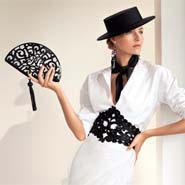- About
- Subscribe Now
- New York,
June 4, 2013

VIENNA, Austria – An executive from American Express at the FT Business of Luxury Summit 2013 shared new findings concerning a consumer segment called the luxury newcomers that, on average, makes up 25 percent of fashion brands’ customer base.
The “Luxury’s Changing Landscape” presentation based on findings from American Express Business Insights profiles shoppers that purchased luxury fashion for the first time in the past year. Despite what marketers may assume, Generation X and Generation Y are represented equally throughout the whole luxury consumer segment as well as the luxury newcomer group.
“There is a common assumption that [luxury newcomers] are younger – much younger – than the original customer base,” said Armand de Milleville, vice president and head of merchant services for France and the Netherlands at American Express. “It is actually no longer necessarily true.
“Across all markets, about half of newcomers are Generation X and Generation Y,” he said. “The same goes for existing customers."
This data was gathered from transactions and other evidence from American Express.
Premium prospects
There is an established taste for luxury brands among growing consumer segments such as the luxury newcomers, per Mr. de Milleville.
Today, they are not just buying licensed products and low-ticket items, but they are willing to spend on premium luxury.
The new report found that among luxury fashion brands in France, Italy, Britain and the United States, 1 in 4 customers are newcomers to the industry, meaning that it is their first time purchasing luxury fashion during the past year.
Luxury newcomers have not yet established brand loyalty and have different priorities when spending on items such as fine dining and electronics, according to American Express data.
“We believe that is an indication,” Mr. de Milleville said. “It is worth it now to look at the characteristics of those newcomers.
“The newcomers like experiential activities,” he said. “More than others, they would like to travel to exotic locations.
“Last but not the least, they are more likely to experience luxury brands through the online channel.”
Mr. de Milleville
Shoppers with character
The generations that comprise the luxury newcomer segment are similar to luxury brands’ existing customer base.
The majority of luxury newcomers in Britain, France and Italy are men, while the gender of luxury newcomers in the U.S. is about even between men and women.
In their efforts to acquire new customers, luxury fashion brands should certainly be inclusive of men, per Mr. de Milleville.
The report also examined the probability that consumers who enter the luxury fashion space will purchase from other luxury categories – or the halo effect, in other words.
Compared to the average luxury fashion spend, luxury newcomers in the U.S. spend twice as much on luxury lodging and fine dining, newcomers in Britain spend 2.5-times as much in these categories, newcomers in France spend 1.7-times as much and newcomers in Italy spend 1.6-times as much.
Furthermore, the average percentage of luxury newcomers that shop via the Internet signals that marketers should continue to establish and maintain their presence on the channel.
Twenty-eight percent of luxury newcomers in the U.S. go online to shop.
Also, 13 percent of newcomers in Britain, 27 percent of newcomers in France and 28 percent of newcomers in Italy go online to shop.
“Rely more on this mix of online and in-store spending,” Mr. de Milleville said.
Final Take
Tricia Carr, associate reporter on Luxury Daily, New York
Share your thoughts. Click here